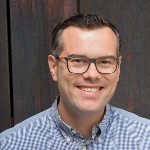Project description
Conducting porous materials are commonly used in modern energy storage and battery systems as socalled supercapacitors due to their large available surface area, but are also of fundamental relevance for green chemistry in the electrocatalytic reduction of CO2 to (re-)usable fuels. The hierarchical character of such porous media is employed widely in industry for separation, catalysis, etc. and combines several porosity scales to overcome slow diffusion in microporous solids. Available modelling approaches for the transport, and thus the charging and reaction dynamics, even when based on a physical ground, are limited to empirical parameters which cannot be derived from molecular adsorption/transport coefficients as typically in such strong confinement even the amount of mobile charge carriers is unknown. This project aims at developing a bottom-up model of the subtle interplay between voltage-dependent adsorption and transport in multi-scale conducting porous materials using data-driven approaches combining molecular simulation, theory and experimental data. The goal of this research is to determine the fundamental physical characteristics of transport and adsorption on different length scales from molecular investigations. The obtained insight will be incorporated into the research of SimTech collaborators to bridge the multi-scale and multi-physics character not only relevant for industrial applications but also in biology or environmental engineering.
Project information
| Project title | Bottom-up modeling of hierarchical porous electrode materials via molecular simulation |
| Project leaders | Alexander Schlaich (Holger Steeb) |
| Project staff | Samuel Tovey, doctoral researcher |
| Project duration | April 2021 - December 2025 |
| Project number | PN 3-15 |
Publications PN 3-15
2024
- B. Bursik, R. Stierle, A. Schlaich, P. Rehner, and J. Gross, “Viscosities of inhomogeneous systems from generalized entropy scaling,” Physics of Fluids, vol. 36, Art. no. 4, Apr. 2024, doi: 10.1063/5.0189902.
2023
- V. Artemov et al., “The Three-Phase Contact Potential Difference Modulates the Water Surface Charge,” The Journal of Physical Chemistry Letters, vol. 14, Art. no. 20, May 2023, doi: 10.1021/acs.jpclett.3c00479.
- S. Gravelle, D. Beyer, M. Brito, A. Schlaich, and C. Holm, “Assessing the Validity of NMR Relaxation Rates Obtained from Coarse-Grained Simulations of PEG–Water Mixtures,” The Journal of Physical Chemistry B, vol. 127, Art. no. 25, Jun. 2023, doi: 10.1021/acs.jpcb.3c01646.
- A. Schlaich, S. Tyagi, S. Kesselheim, M. Sega, and C. Holm, “Renormalized charge and dielectric effects in colloidal interactions: a numerical solution of the nonlinear Poisson--Boltzmann equation for unknown boundary conditions,” The European Physical Journal E, vol. 46, Art. no. 9, Sep. 2023, doi: 10.1140/epje/s10189-023-00334-2.
2022
- A. Schlaich, D. Jin, L. Bocquet, and B. Coasne, “Electronic screening using a virtual Thomas--Fermi fluid for predicting wetting and phase transitions of ionic liquids at metal surfaces,” Nature Materials, vol. 21, Art. no. 2, Feb. 2022, doi: 10.1038/s41563-021-01121-0.
- S. Liese, A. Schlaich, and R. R. Netz, “Dielectric Constant of Aqueous Solutions of Proteins and Organic Polymers from Molecular Dynamics Simulations,” The Journal of Chemical Physics, 2022, doi: 10.1063/5.0089397.
- S. Gravelle, C. Holm, and A. Schlaich, “Transport of thin water films: from thermally activated random walks to hydrodynamics,” The Journal of Chemical Physics, 2022, doi: 10.1063/5.0099646.

Alexander Schlaich
Dr.Multiscale Materials Modeling

